Keywords
|
| Software –Defined Radio, Cognitive Radio, Cantilever Biosensors, Sensor-Array, Neural Network. |
INTRODUCTION
|
| Explosive detection is an active research field with several commercial progeny. However, very little work has been done on the system application front. To be practical and useful in the field, strong explosive detection sensors are required. These sensors need to be a part of a complete system solution that is adaptable to different user needs and skills. To meet the criteria for saving the world from terrorist attacks whereby people may be protected from explosives, a well defined and suitable explosive detection system must be adopted[1]. This paper projects an integrated architecture that combines the strength of cognitive radio, mobile SDR, nano sensor, electronic nose and existing gas recognition system for the above purpose. |
| The objective is to find out a feasible medium which basically predominates the communication market and has a promising future. Looking at today’s telecom service scenario we see that it is continuing to record a strong growth with teledensity rising everyday. Also the wireless segment has shown a tremendous growth in the last couple of years while the wireline segment has shown a negative direction. |
| This paper is organized as follow: Section I gives the Introduction about Explosive detection. Section II gives an overview of cognitive radio, SDR(Software Defined Radio), RICA architecture, cantilevers(its functioning principles), construction of neural network. Section III provides the proposed actual implementation of our system. Section IV show the performance ofproposed technique and the last section V concludes the paper and followed by the references. |
AN OVERVIEW
|
| A) Basics and evolution of cognitive radio[6]:- A cognitive radio (CR) is an SDR that additionally senses its environment, tracks changes, and reacts upon its findings. A CR is an autonomous unit in a communications environment that frequently exchanges information with the networks it is able to access as well as with other CRs. From our point of view, a CR is a refined SDR while this again represents a refined DR[6]. |
| According to its operational area an SDR can be |
| i) a multiband system: which is supporting more than one frequency band used by a wireless standard (e.g., GSM 900, GSM 1800, GSM 1900), |
| ii) a multistandard system: that is supporting more than one standard. Multistandard systems can work within one standard family (e.g., UTRA-FDD, UTRA-TDD for UMTS) or across different networks (e.g., DECT, GSM, UMTS,WLAN), |
| iii) a multiservice system: which provides different services (e.g., telephony, data, video streaming), |
| iv) a multichannel system: that supports two or more independent transmission and reception channels at the same time. |
| The SDR approach allows different levels of reconfiguration within a transceiver. |
| i) Commissioning: the configuration of the system is done once at the time of product shipping, when the costumer has asked for a dedicated mode (standard or band). This is not a true reconfiguration. |
| ii) Reconfiguration with downtime: reconfiguration is only done a few times during product lifetime, for example, when the network infrastructure changes. The reconfiguration will take some time, where the transceiver is switched off. This may include the exchange of components. |
| iii) Reconfiguration on a per call basis: reconfiguration is a highly dynamic process that works on a per call decision. That means no downtime is acceptable. Only parts of the whole system (e.g., front-end, digital baseband processing) can be rebooted. |
| iv) Reconfiguration per timeslot: reconfiguration can even be done during a call. |
| Figure 1 shows an SDR transceiver that differs from a conventional transceiver only by the fact that it can be reconfigured via a control bus supplying the processing units with the parameters which describe the desired standard. Such a configuration, called a parameter-controlled (PaC) SDR, guarantees that the transmission can be changed instantaneously if necessary (e.g., for interstandard handover). |
| B) SDR(Software Defined Radio) |
| The main challenge in designing a mobile wireless Software Defined Radio (SDR) system is to provide a solution that has high flexibility, hardware-like throughput, low power consumption, in addition to ease of programmability. A new architecture for SDR is based on a reconfigurable instruction cell array (RICA). The architecture targets the IEEE 802.11g standard that includes Viterbi decoding, which is a key performance bottleneck[2]. |
| Software Defined Radio (SDR) is currently one of the most important topics in the area of mobile and personal communications. It is viewed as an enabler of global roaming and as a unique platform for the rapid introduction of new services into existing cellular and local networks. Therefore SDR promises mobile communication technology a major increase in flexibility, capability and durability. |
| This section proposes a solution for the mobile SDR, based on a novel RICA processing element that provides low power hardware-like performance while can be programmed all the way through with only ANSI-C. |
| C) RICA Architecture overview |
| As it shows in figure 2, RICA’s coarse-grain processing fabric, with its Instruction Cells (ICs) provides a hardware level performance by executing assembly-like instructions, so a straight forward CPU-like design-flow can be obtained. |
| Applications such as wireless communication standards mapped onto RICA can be written in C or C++ and compiled through a tailored C compiler. ICs are connected through a network of programmable switches to allow the creation of data paths by reading the configuration bits from net list files stored in the program memory[3]. The interconnect configuration is dynamically reprogrammed at run-time based on the schedule information. |
| D) Cantilever |
| Cantilevers (springboard) are nano mechanical biosensors, micro fabricated with the standard silicon technology. Their sizes are in the micrometer or nanometer range. Due to their intrinsic flexibility, together with the availability of techniques designed to monitor bending, cantilevers have become versatile tools for SF. This technology is already established and well documented as a multifunctional and highly sensitive technique, and a real time method useful for a variety of applications, such as plastic explosive detection using gas biosensors. |
| i)Functioning principle: detection of molecular interactions |
| The immobilization of molecules on the cantilever surface is required for its use as a nano mechanical sensor. The selection of the molecule depends on the intended application. This principle applies whether if the molecule to be detected (analyte) will be presented in a liquid or a gas phase. The immobilized molecules provide the cantilever with specificity for the analyte. The specific molecular interactions taking place at the flexible surface of cantilever increase surface tension, forcing the cantilever to bend. This type of surface tension induced by molecular interactions is not generally observed on the surface of common materials. The cantilever senses the tension and bends in response to the free energy changes taking place at its surface as shown in fig.3. |
| Figure 4 is a schematic of the basic sensor design. A blue light emitting diode (LED) is used as the fluorescence excitation source. The light emitted by the LED passes through a lens and a filter, allowing only a narrow-wavelength band of light centered at 430 nm to impinge on the polymer film, which is coated on two thin glass sheets[11]. A pump pulls in air samples across the coated glass sheets. If the air sample contains explosive vapors, the photomultiplier detector will sense a decrease in light intensity and trigger an alarm. |
| E) Explosive detection system using sensor array and neural network |
| The sensor signals are transferred to a test system and monitored using a personal computer in a testing chamber, as shown in Fig 5[11]. |
IMPLEMENTATION
|
| A) Mobile SDR Terminals[22] |
| The general structure of a PaC-SDR terminal was already given in Figure.1.Now we are going to look into the PaCSDR transceiver structure in a more detailed way. The main processing modules of an SDR terminal are the radio front-end, the baseband processing, and the data processing. We are going to focus on the front-end here[4]. |
| The receiver branch transforms the analog RF antenna signal into its digital complex baseband representation. |
| Figure 6 shows how it works: coming from the antenna, the RF signal is first band pass filtered and then amplified. Following a two-way signal splitter, the next step is an analog mixing with the locally generated RF frequency in the in-phase (I) path and with the same frequency phase shifted by −π/2 in the quadrature (Q) path. Afterwards, the I and Q components of the signal are low-pass filtered and A/D converted. The sampling rate of the A/D converters should be fixed for all signals and has to be chosen in such a way that the conditions of Shannon’s sampling theorem are fulfilled for the broadest signal to be processed. Before the sampling rate can be adapted to the signal’s standard, the impairments of the two-branch signal processing that come from the analog mixers and filters as well as from the A/D converters themselves have to be corrected [4,5]. |
| The SDR transmitter branch consists of the procedures inverse to that of the receiver branch. That is, the signal to be transmitted is generated as a complex baseband signal, from which, for example, the real part is taken to be shifted to the (transmission) RF. For SDRs, reconfigurability means that the radio is able to process signals of different standards or even signals that are not standardized but exist in specific applications. |
| B) The Software Communication Architecture |
| The SCA describes how waveforms are to be implemented onto appropriate hardware devices. A waveform is defined by the determination of the lower three layers (network, data link, physical) of the ISO/OSI model. Therefore, waveform is a synonym of standard or air interface. Based on the waveform definition, a transmission method is completely determined. The definition of a waveform, therefore, lays down the modulation, coding, access, and duplex modes as well as the protocol structure of the transmission method. The SCA defines the software structure of an SDR[6]. |
| When developing an SCA compliant radio device the supplier gets the operating system and the CORBA middleware from the commercial market. The core framework as well as the waveform is developed by him or he also gets it from the market or (in future) it may be contributed by the JPO. |
| The SCA is the description of an open architecture with distributed components. It strictly separates applications (waveforms) from the processing platform like hardware, operating system, object request broker, core framework. It segments the application functions and defines common interfaces for the management and the employment of software components. It defines common services and makes use of APIs to support the portability of hardware and software components and of applications. |
| The connections between the applications and the core framework within the SCA are given by the APIs. Standardized APIs are essential in assuring the portability of applications as well as for the exchangeability of devices. APIs guarantee that application and service programs may communicate with one another, independent of the operating system and the programming language used[3]. |
| C) Technology Centric Cognitive Radio |
| In a more advanced spectrum sharing system, CRs have to apply more advanced algorithms. If a portion of the spectrum may be accessed by any access mode, the following procedure becomes imaginable: starting from the transmission demand of its user, the CR decides about the data rate, the transmission mode, and therefore about the bandwidth of the transmission. Afterwards it has to find an appropriate resource for its transmission. This presumes that the CR knows where it is (self-location), what it is able to do (self awareness), and where the reachable base stations are. To get more information about possible interferences it should, for example, be able to detect signals active in adjacent frequency bands and to recognize their transmission standards[6] . |
| Summing up, a CR should have implemented the following technologies (possibly among others): |
| (i) location sensors (e.g., GPS or Galileo); |
| (ii) equipment to monitor its spectral environment in an intelligent2 way; |
| (iii) in order to track the location’s or the spectral environment’s developments, learning and reasoning algorithms have to be implemented; |
| (iv) when complying with a communications etiquette, it has to listen before talk as well as to prevent the disturbance of hidden stations; |
| (v) in order to be fair it has to compromise its own demands with the demands of other users, most probably in making decisions in a competitive environment using the results of game theory. |
| (vi) it has to keep its owner informed via a highly sophisticated man-machine interface. |
| A first block diagram of a technology centric CR is given in Figure 7. One of the most important decisions that have to be made in an open access environment is whether a control channel is to be implemented or not. The most challenging development is that of the information and knowledge processing. |
| D) Hardware architecture for mobile SDR[6] |
| In commercial wireless communication systems, low computation algorithms are often handled by DSPs, whereas high computation algorithms are mapped to ASICs or FPGAs. The whole system comprises an integrated SoC with a simple controller, such as an ARM processor for handling tasks which are control or input/output related. Considering the complexity of the above real time systems, we integrate the design of individual base band processing algorithms on a single RICA core using a unified programming language, ANSI-C, together with the ARM controller[6]. |
| All the processors in the architecture are connected through AHB bus interface that has a large 64/128 bit data width, as shown in figure 8. |
| Peripherals are linked by APB bus. Digital signal data flows fed from A/D directly, digital front end or other communication modules are coupled with the RICA core using a DMA engine, or preprocessed through the ARM microcontroller before being fed into RICA core through the AHB internal bus (when speed is not critical but frame level management is required). Each RICA core can be assigned different tasks. This is decided in the high level software design flow. Once each net list file is generated for the RICA cores, these can be downloaded into each RICA core individually either through internal AHB bus or through the debug interface. The net list files contain step context that is used to configure the RICA cores and indicate which instruction cells are active in a given step. This in addition, provides routing information to build connections between ICs, as well as providing timing information. The program counter is maintained by RICA core itself. |
| E) Implementation of gas recognition system |
| Using the sensitivity signals from the sensor array as multi-dimensional input patterns, a gas pattern recognizer using a multi-layer neural network with an error back propagation learning algorithm is used. The neural network consisted of an input layer with nine nodes which received the data from the sensors on the sensor array, a hidden layer with eight neurons, and an output layer with nine nodes as shown in Fig. 3.9. |
| The nine nodes in the output layer indicated the recognition results. The learning process was repeated until the learning error reached 0.0001. The implemented gas recognition system is shown in Fig. 10. |
| An analog multiplexer, filter, and signal transformer for level shifting were all included in a data acquisition board for transferring the multi-signal to a digital signal processor (DSP) board. The learned connection-weights were then saved in the DSP board memory. For real time processing, the recognized gas species and concentrations can then be displayed on a liquid crystal display (LCD) board. |
| A variety of object oriented programming language like C++, Java may be used for the algorithms. SDR can be implemented in hardware using FPGA, DSP processor or application specific integrated circuit (ASIC). Figure 11 provides a schematic diagram of SDR. |
| The RF front-end is used for amplification and filtering because the signal received by the antenna is usually a weak signal and also has the much greater bandwidth than the information bandwidth. A block diagram of a typical frontend is shown in Figure 12. Amplification is generally multi stage amplification is also used. |
| Baseband processing is performed in software using digital signal processors (DSPs), field programmable gate arrays (FPGAs), application specific integrated circuits (ASICs), or general purpose processors (GPPs). The algorithm used to modulate or demodulate signal may use a variety of software methodologies, such as middleware, e.g., common object request broker architecture (CORBA). Here the FPGAs perform the signal processing associated with channelization including filtering, interpolation, decimation, correlation, Fast Fourier Transforms (FFT), etc and the DSP typically handles the modulation and demodulation. Forward Error Correction (FEC) decode is usually done by a hardware acceleration block in the DSP[1]. The General Purpose Processor (GPP) is responsible for implementing the Medium Access Control (MAC) layer, the JTRS Software Communications Architecture (SCA) and associated CORBA framework, on top of a real-time operating system. |
| F) Implementation of system |
| This section provides a brief outline for the implementation of a mobile sensor network for explosive trace detection using cellular network. The idea is to design a tiny CRSN using a Nano Electronic Nose and integrate it with SDR as shown in Figure 13. |
| The sensor with SDR consisting of minimum hardware miniaturizes the sensor node. Chemical sensor array(electronic nose) will generate an analog signal due to absorption of explosive molecules and for processing the data it is converted to digital signal by ADC[8,9]. |
| An electronic nose is usually composed of an array of chemical sensors and a pattern recognition system, such as an artificial neural network to recognize and automatically identify each chemical as shown in Figure 14. The array response corresponds to the change in the resistance, Rji(t) (j = 1, , n, where n = number of the sensors) due to the vapor absorption with concentration level Ci as every element of the array is filtered for noise and complexity reduction in order to meet the odor recognition task. This is digitized and the converted signal is then represented by an n-dimensional vector. The pattern recognition system uses the database of the fingerprints produced by different types of vapors to measure their concentration level and subsequently recognize the chemical[1,11]. |
| Each cantilever sensor in an array is coated with a different sensor layer. When the sensor is exposed to an analyte, the analyte molecules adsorb on the cantilever’s surface, which leads to interfacial stress between the sensor and adsorbing layer that bends the cantilever. Each cantilever bends in a characteristic way typical for each analyte. From the magnitude of the cantilever’s bending response as a function of time, a fingerprint pattern for each analyte can be obtained[9]. |
| The processing unit is required to store the data and recognize the explosive using an efficient algorithm. Before transmitting that information, it gathers spectrum usage information through spectrum sensing and then takes a decision about the channel transmission parameters e.g. transmission power, modulation etc. This is called spectrum decision. After that it reconfigures its SDR based transreceiver to send the sensory data to the nearest base station. |
CONCLUSION
|
| Explosive trace detection is still a challenging task for researches and academicians. Gas recognition system is still an open topic of research. Attempts are being made to design a pattern recognition system that uses the database of fingerprints produced by different vapours (gases) with different concentration levels. However, the design of single chip nanonose is a tedious job and requires a very accurate aligment of nanosensors and appropriate interfacing parameters. The papers published in past years are all combined to propose an efficient architecture for explosive detection. Since this approach seems to be very futuristic, eventually in near future, the reliability and efficiency of explosives detection will improve and hopefully a practical implementation of system will be done. |
| |
Figures at a glance
|
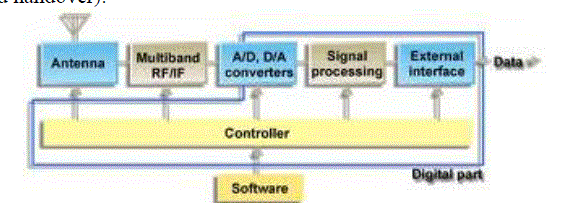 |
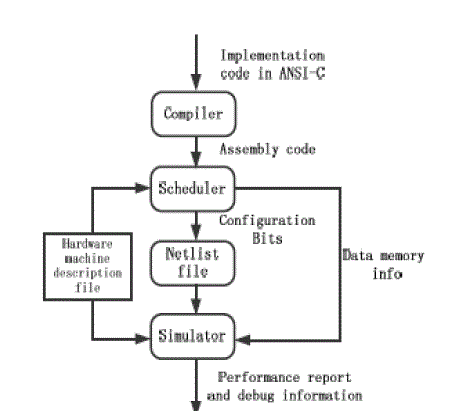 |
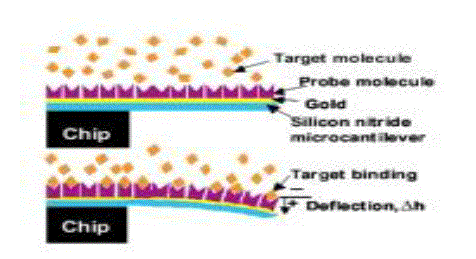 |
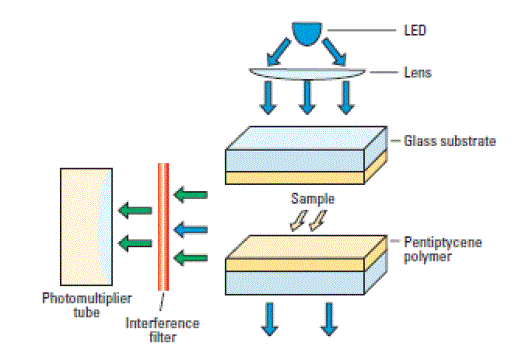 |
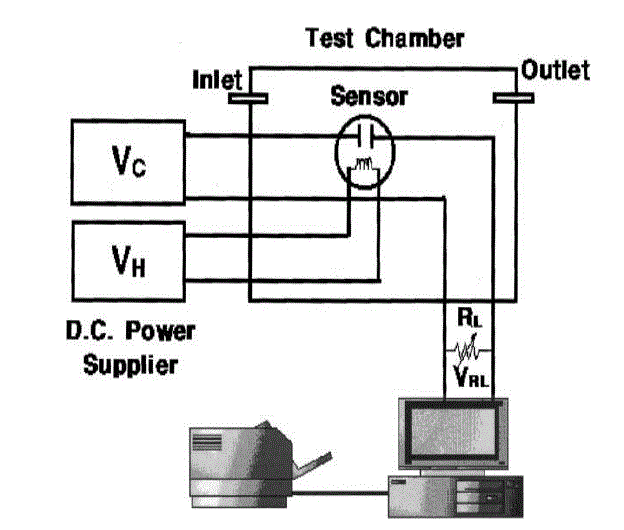 |
| Figure 1 |
Figure 2 |
Figure 3 |
Figure 4 |
Figure 5 |
| |
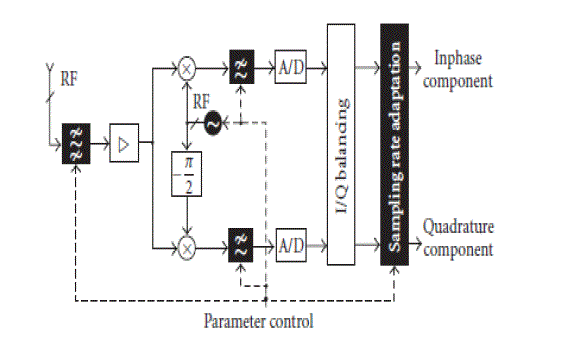 |
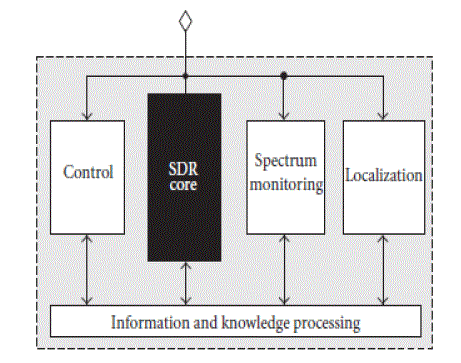 |
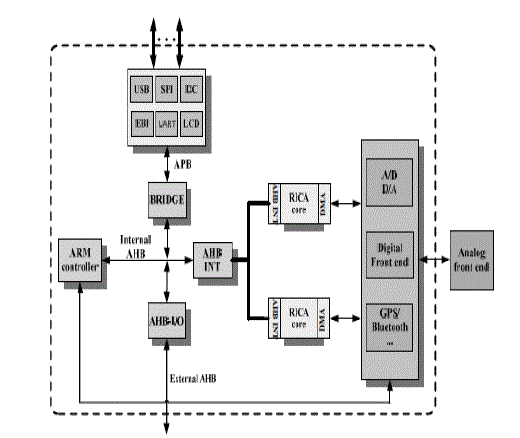 |
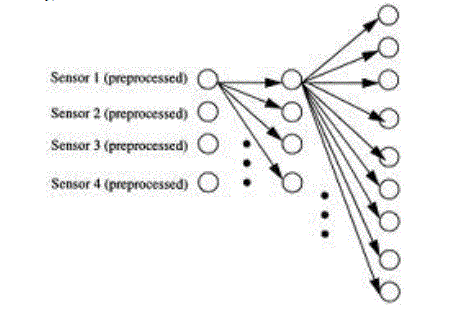 |
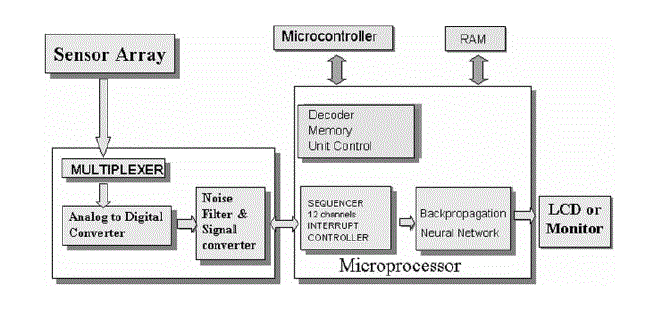 |
| Figure 6 |
Figure 7 |
Figure 8 |
Figure 9 |
Figure 10 |
| |
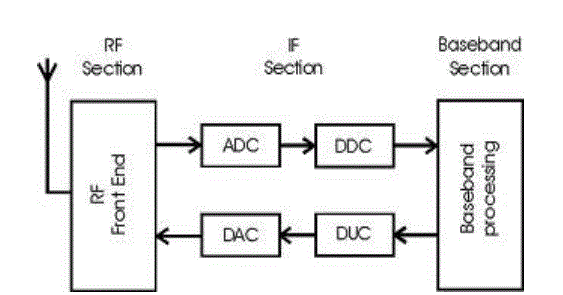 |
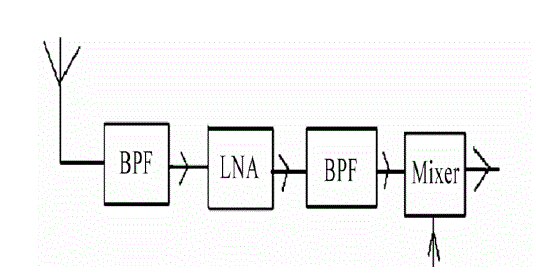 |
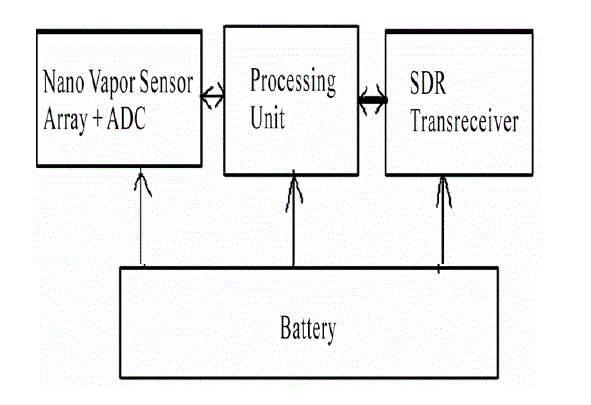 |
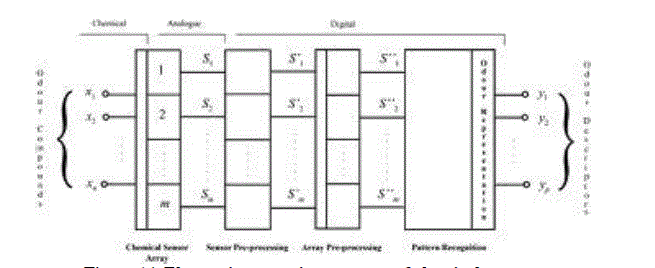 |
| Figure 11 |
Figure 12 |
Figure 13 |
Figure 14 |
|
| |
References
|
- Swagata Roy Chatterjee, Mohuya Chatterjee, Jayanta Chakraborty,?Cognitive Radio Sensor Node Empowered Mobile Phone for Explosive TraceDetection?, International Journal Communications, Network and system sciences, 4, 33-41, 2011,.doi:10.4236/ijcns.2011.41004.
- Zong Wang, Tughrul Arslan,?A Low Power Reconfigurable Heterogenous Architecture for A Mobile SDR System”, Proceedings of IEEEinternational symposium on electronics design, test and applications(DELTA 2008), vol.1,pp.148-152, Jan2008.
- E. L. Org, R. J. Cyr, G. Dawe, J. Kilpatrick and T. Counihan, ?Software Defined Radio—Different Archi-tectures for Different Applications,? Proceedingsof the Software Defined Radio Technical Conference and Prod-uct Exposition, Denver, , pp. 1-5, 5-9 November 2007.
- Harada, ?Software Defined Radio Prototype toward Cognitive Radio Communication Systems,? Proceedings of 1st IEEE InternationalSymposium on New Frontiers in Dynamic Spectrum Access Networks, Baltimore, Vol. 1, pp. 539-547, 8-11 November 2005. doi:10.1109/DYSPAN.2005.1542667
- J. Polson, ?Cognitive Radio Applications in Software Defined Radios,? Proceedings of the Software Defined Radio Technical Conference andProduct Exposition, Phoenix, 15-18, pp. 1-24, November 2004.
- F. K. Jondral, ?Software-Defined Radio—Basics and Evolution to Cognitive Radio,? EURASIP Journal on Wireless Communications andNetworking, Vol. 2005, No. 3, pp. 275-283, 2005. doi:10.1155/WCN.2005.275
- N. R. Frómeta, ?Cantilever Biosensors,? Biotecnología Aplicada, Vol. 23, No. 4, pp. 320-323, 2006,.
- L. Senesac and T. G. Thundat, ?Nanosensor for Trace Explosive Detection,? Materials Today, Vol. 11, No. 3, pp. 28-36, March 2008,.doi:10.1016/S1369-7021(08)700 17-8
- D. Y. Kong, Y. G. Qi, L. L. Zhou, B. T. Lin, Z. Li, R. H. Zhu and C. L. Chen, ?MEMS Based Sensors for Explo-sive Detection: Development andDiscussion,? Proceedings of 3rd IEEE International Conference on Nano/Mi-cro Engineered and Molecular Systems, Sanya, , pp. 265-269, 6-9 Janu-ary 2008.
- Dae-Sik Lee, Ho-Yong, Jun-Woo Lim,?Explosive gas recognition system using thick film sensor array and neural network?, Sensors and ActuatorsB 71 (2000) 90-98, June 2000.
- J. Yinon, ?Detection of Explosives by Electronic Noses,? Analytical Chemistry, Vol. 75, No. 5, pp. 98A-105A, March 2003,. doi:10.1021/ac0312460
|